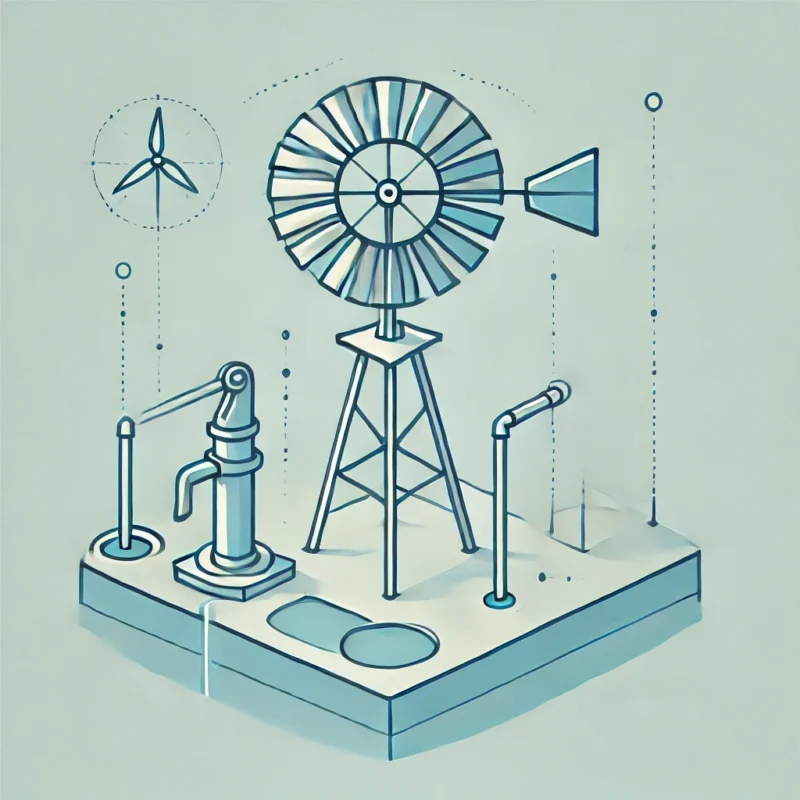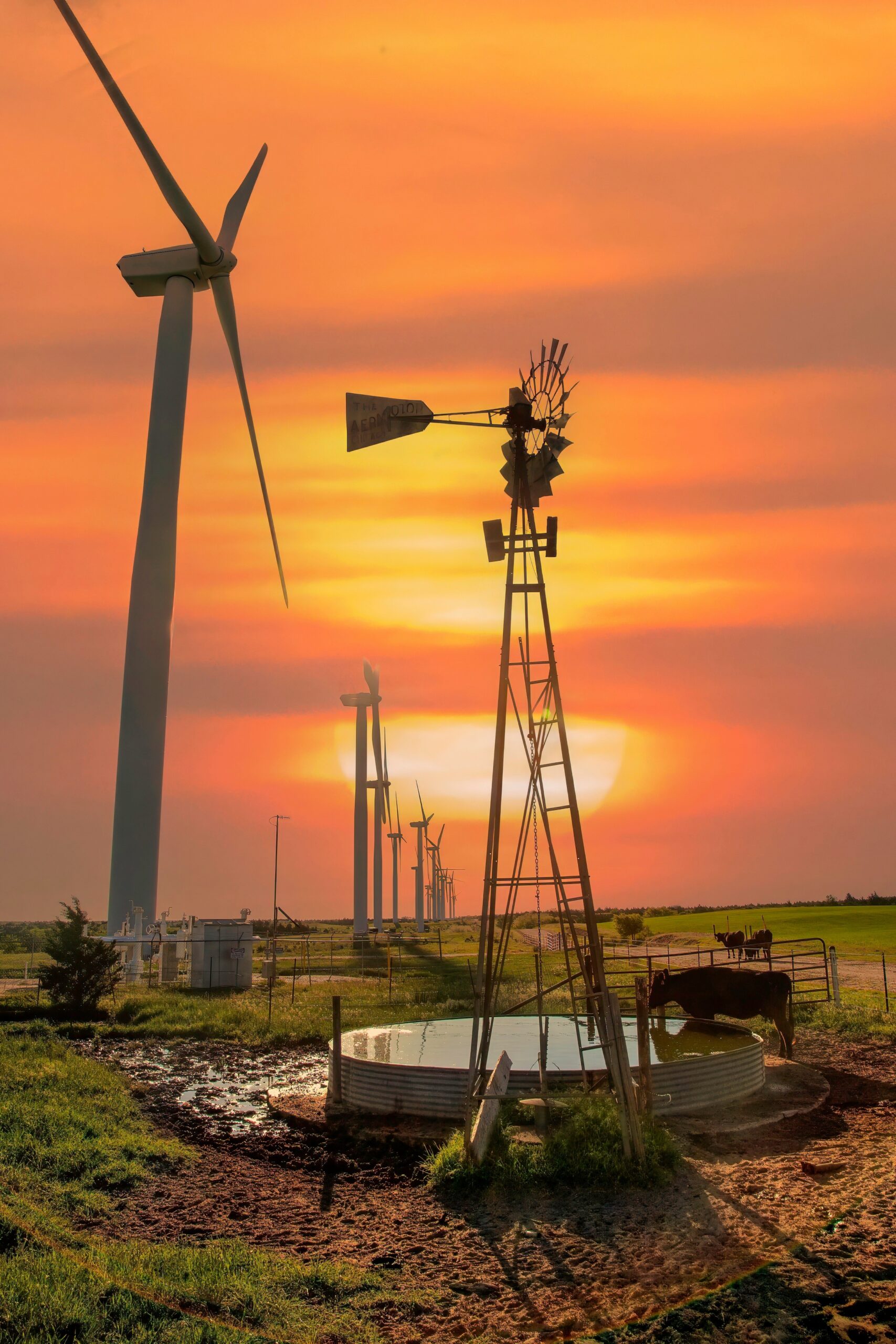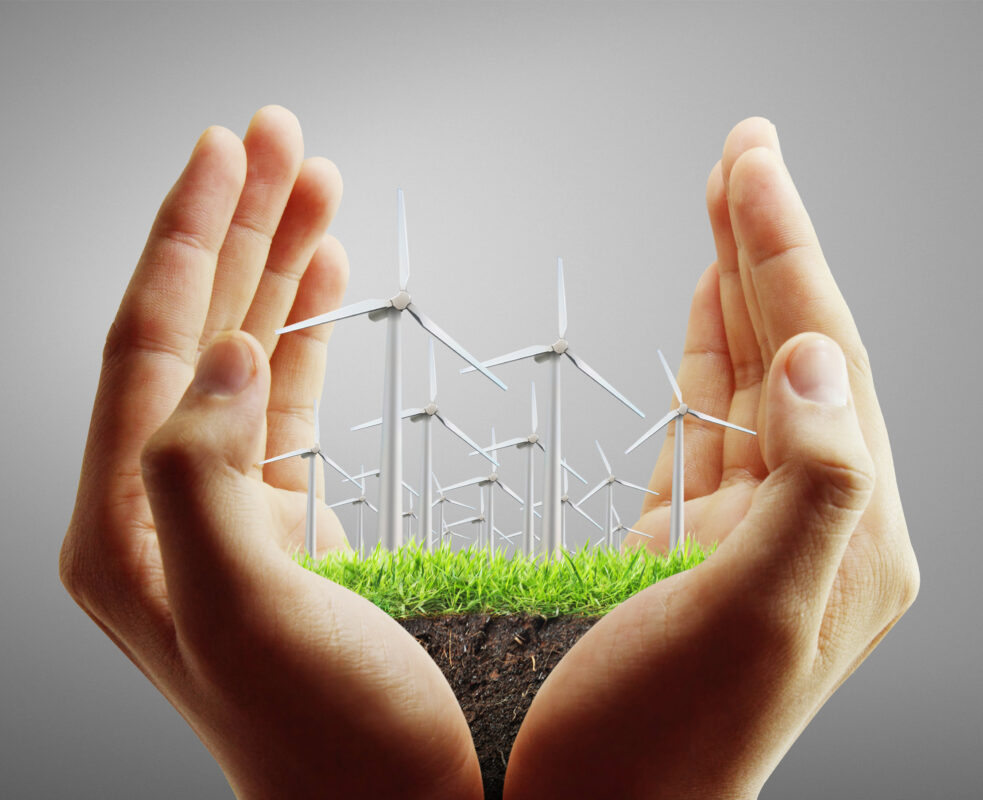Are you thinking about going off the grid? No matter if your goal is cost efficiency or conserving natural resources, you’ll face some critical decisions. Living off-grid isn’t just about electricity – you also need a clean, sustainable, and reliable water source to support your daily life or agricultural activities. Discover how water pumping solutions can meet your needs, and how they can help developing countries access abundant water sources at a relatively low cost.
Learn the Basics: What is an Off-Grid Water Pumping Solution and How Does it Work?
Water pumping systems powered by mechanical, solar, or wind energy can provide essential support to regions that suffer from poor water resources. Since they don’t rely on public utilities like electricity or gas, these systems are ideal for remote areas without access to the power grid. This makes them attractive not only to municipal authorities or support organizations like UNESCO, but also to individuals and businesses seeking off-grid, efficient solutions.
Independent water pumps are especially beneficial for farmers with high water demands and for those looking to reduce their reliance on conventional resources.
Introduction to Independent Water Pumping Systems
What do we mean by “independent water pumping systems”? At the core of any system is the pump – either submersible or surface-mounted, depending on the depth of the water source. Essentially, the pump moves water from a lower to a higher elevation by creating pressure differences. This process requires energy (mechanical or electrical) to lower the pressure at the inlet and push water into the piping system.
The key components of an off-grid water pumping system include:
-Motor – provides energy for the impeller or piston.
-Impeller or piston – moves water by creating pressure.
-Inlet – where water enters the pump.
-Outlet – where water exits the pump.
All these components are placed in a pump casing, which protects the mechanism and ensures that water flows in the right direction. Electric: solar or wind power water pump manufacturers recommend using a pump controller, which regulates voltage and ensures optimal performance.

Off-Grid Water Pump Systems
What does “off-grid” mean in the context of water pump systems? The main difference between these pumps and conventional ones is that they don’t rely on public utilities, especially electricity. Living off-grid (or running an off-grid business) doesn’t necessarily mean living without electricity – the key is that power is generated from independent, renewable sources. Let’s see how this works!
Types of Off-Grid Water Pumps
There are two main types of off-grid water pumping systems, distinguished by the source of energy they use: mechanical or electrical.
Mechanical Water Pumps Without Electricity
Did you know you don’t need electricity to pump water at all? Mechanical pumps, like ram pumps (this is the most popular type) don’t rely on technology – they use laws of physics instead! Water pumping is in this case based on pressure and gravity.
Here’s how it works: water from a lower-level flows through a pipe into the pump, creating high pressure. A waste valve opens briefly, causing a pressure spike (known as a “water hammer”) that pushes water into a chamber filled with air. The compressed air then forces the water through a pipe, sending it to the surface or into a storage tank.
The ram pump is low-maintenance and eco-friendly, making it a true off-grid solution. However, its application is limited. Ram pumps can only work with flowing water and are less efficient than electric pumps. Gravity and pressure alone don’t generate enough energy to pump water over long vertical distances.
Solar and Windmill Water Pumps
Electric systems, such as windmill or solar powered water pumps, can lift water to greater heights than mechanical pumps. The key component is the motor, which generates energy and drives the piston or impeller that pushes water through the piping system.
Both windmill and solar pumps work similarly:
-Windmill pumps use power generated by rotating wind turbines. This mechanical energy is converted into electricity and transferred to the pump’s motor.
-Solar pumps generate electricity from solar radiation. Photovoltaic cells in solar panels absorb the sun’s energy, which is then used to power the pump’s motor.
The main advantages of solar and windmill water pumps are:
-Renewable energy – crucial in areas without access to the power grid (check how developing countries can benefit from small wind energy).
-Low-cost – using wind or solar energy frees you from paying for conventional energy.
-Low maintenance – once properly installed, these systems require minimal upkeep.
However, the downside of wind turbine and solar-powered pumps is that they depend on weather conditions. They may not perform well on cloudy or windless days. This issue can be solved by using an off-grid water tank, which stores water pumped on sunny or windy days for use during low-energy periods.Read more about advantages and disadvantages of small wind energy compared to other renewable energy sources on our blog.
Solar and wind energy can also support solutions based on conventional energy. It is possible to build systems based on gasoline that will “switch” to renewable energy sources, when needed. This is not a 100% off-grid system, but still, it can save costs and help to reduce use of conventional sources. This solution is recommended for the areas with low insolation or average wind speed, but also for agricultural appliances – as crops and animals need an interrupted access to water.

Choosing the Right Pump
Choosing between mechanical, solar, and wind turbine pumps is just one decision you need to make. The most important factor is what the pump will be used for and where it will be working.
Considerations for Different Applications
Water pumping systems can be used for a variety of purposes: providing drinking water, irrigating gardens and fields, hydrating livestock, or even supporting industrial processes. Each application requires different amounts of water and varying levels of pressure.
The second consideration is the conditions in your area. Is the water source on the surface or deep underground? The answer will help you decide between:
Centrifugal pumps – best for surface water and shallow sources.
Jet pumps – placed on the surface, suitable for water sources up to 7.5-8 meters deep.
Submersible pumps – submerged in water, ideal for deeper sources (up to 200 meters).
If you’re considering an electric pump, it’s important to research the amount of sunlight and average wind speeds at your site. In many regions with poor water access, the conditions for wind power or solar water pumps are ideal, with plenty of sunny and windy days throughout the year.
Agriculture
For agricultural use, where large amounts of water are needed daily, mechanical pumps may not be efficient enough. Only electric solar or wind-powered pumps can meet these demands.
When choosing an agricultural water pump, focus on the motor’s power. The higher the motor power, the more efficiently the pump will work. Additionally, consider the pumping speed, which is measured in litres per minute.
If you run an agricultural business, you are surely aware that any lack of water (even for a short time) is a serious issue. This is why you need to support your farm with a reliable, stable water source. Does an agriculture solar water pump or a windmill solution meet these conditions? Well, they can – but only if you choose turbines or solar panels with the right parameters and complete the whole system with a water tank, as a reservoir for windless and cloudy days.
Looking for a reliable source of renewable energy? Wind power has been proven to deliver consistent results for cases like water pumping stations. Contact us to book your free survey and explore your options.
Home Use
For household applications, a basic mechanical water pump can be a cost-effective solution. Mechanical pumps are affordable, durable, and long-lasting. However, in areas where groundwater is deep, electrical assistance may be needed.
Submersible pumps are a popular choice among household users. They operate quietly and efficiently, and their power and size can be customized to meet specific needs. Since they are submerged in water, they don’t waste energy sucking it up, making them more efficient. When selecting a pump, consider the depth of your water source – the deeper it is, the more power you’ll need.
Using windmill or solar power to run a small household pump is a great way to lower everyday costs and take another step toward off-grid living. Many solar and wind energy systems are designed to meet the needs of most households. Our products – small wind energy solutions – are a good example for it.
Can a Water Pump Be a Reliable, Efficient Solution?
Absolutely – as long as it meets the specific needs of your household, farm, or industry. By choosing the right type of pump (mechanical or electric), along with the appropriate power and efficiency, you can have an independent, reliable, eco-friendly, and off-grid water solution.
Short recommendations for selecting the right pump
After reading this article, you now understand the pros and cons of the most popular water pumping solutions. To fully benefit from an off-grid, low-cost, and efficient system, keep these tips in mind when selecting your pump:wi
-Water flow – how much water the pump can move in a given time.
-Type of pump – remember: centrifugal pumps are best for surface water, jet pumps work for medium-depth sources, and submersible pumps are ideal for deeper sources.
-Energy source – are local conditions sufficient for renewable energy, or will you need conventional power?
-Inlet size – this affects the speed of water flow.
-Maximum head – the maximum depth from which the pump can draw water.
Interested in wind powered water pumping solutions but unsure of the next steps? We provide a free, comprehensive site feasibility survey to help you navigate your wind energy options. Contact us to book your free survey.
Off-grid water pumping systems: cost efficiency for all, sustainability and independence for developing countries
There are some places on Earth where using off-grid, wind or solar-powered water pumps doesn’t mean only cost savings or convenience. This is more about “to be or not to be”, in the context of access to water. Electric water pumps, using solar or wind energy, can pump water from deep sources, also in places far from power grid. This is a chance for better everyday living or agricultural productivity in developing countries.
Ready to make the shift to renewable energy? Our solutions are designed for service stations, marinas, airports, and more businesses with suitable wind conditions. Take advantage of our free site feasibility survey to see how our wind turbines can work for you, providing detailed insights and potential returns. Contact us to schedule a free consultation!






